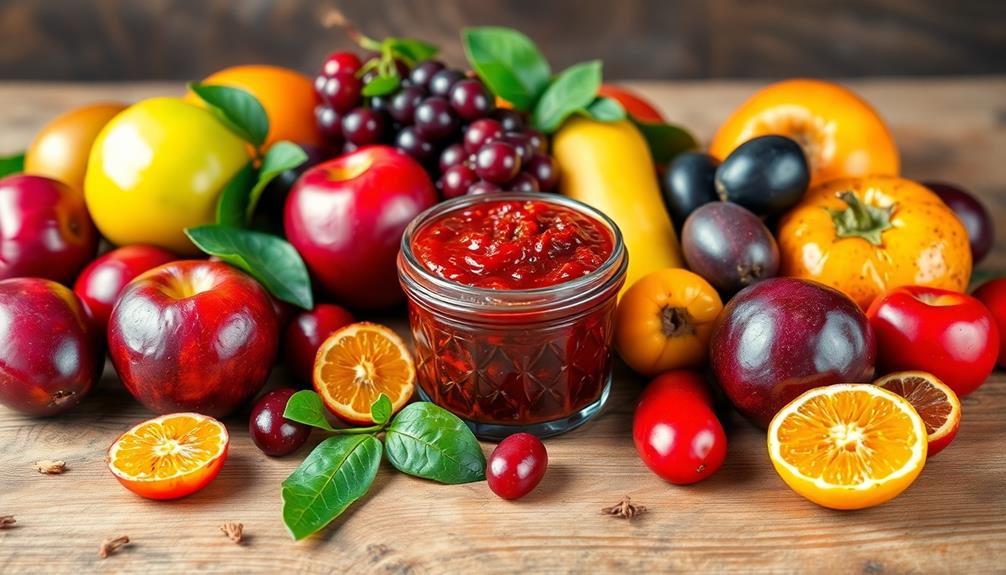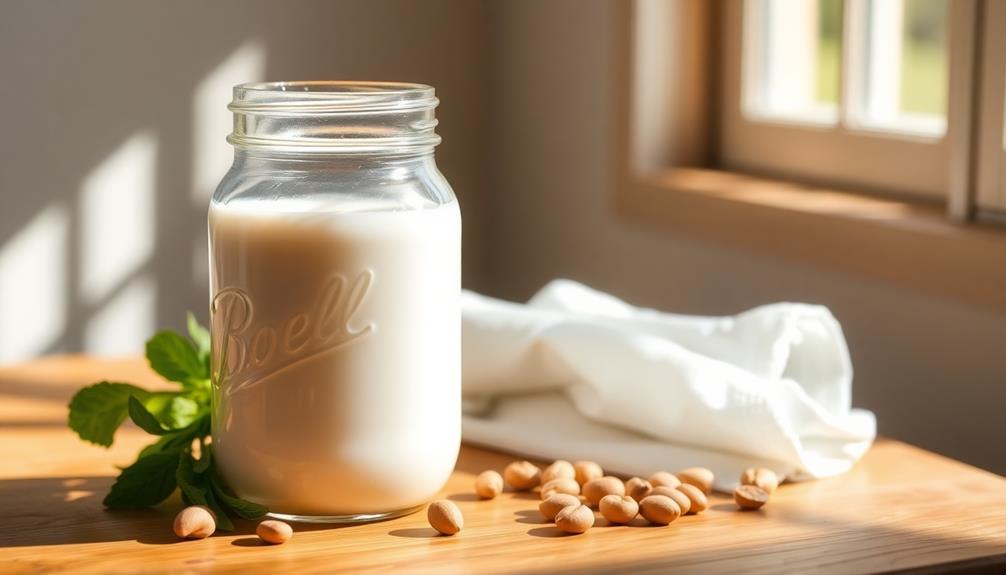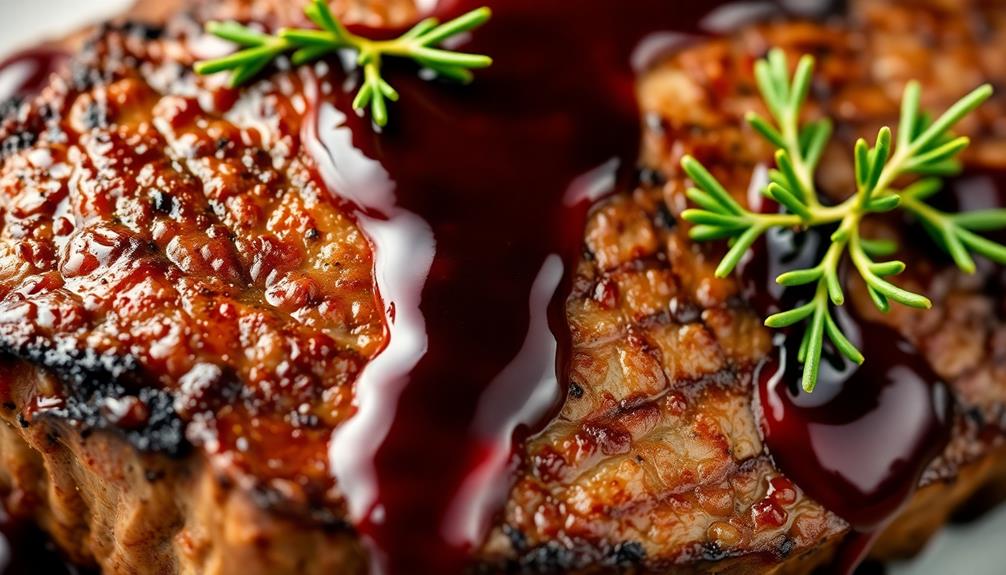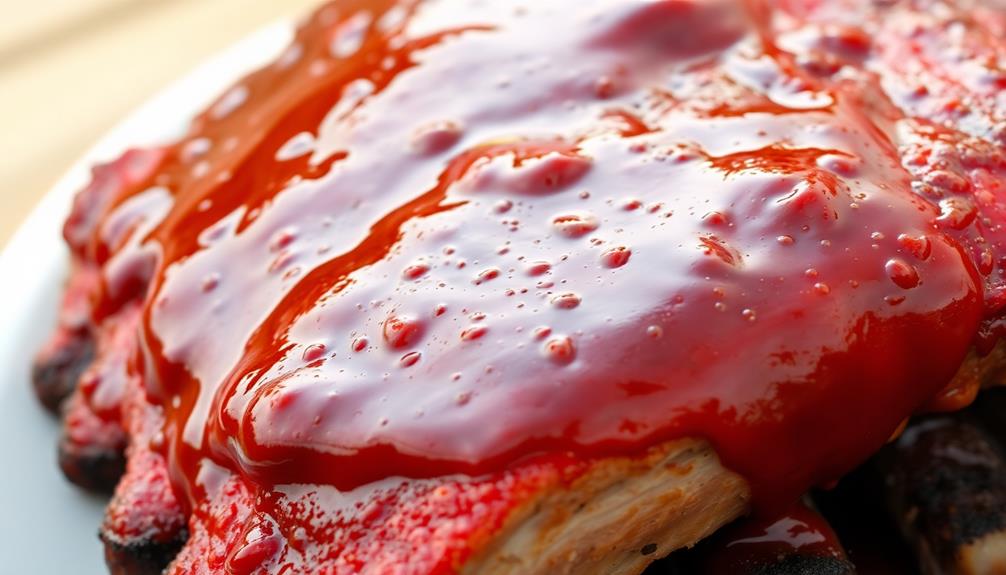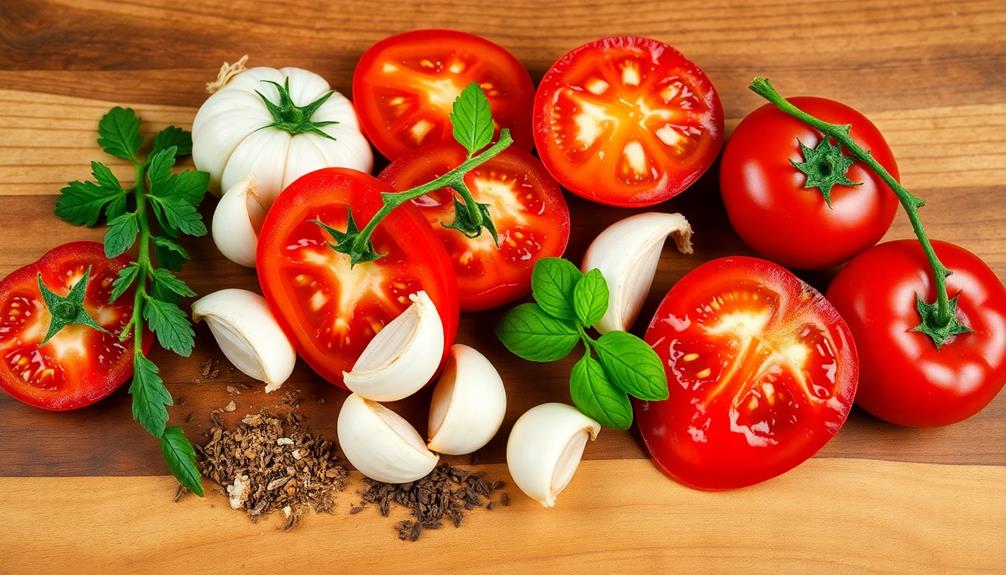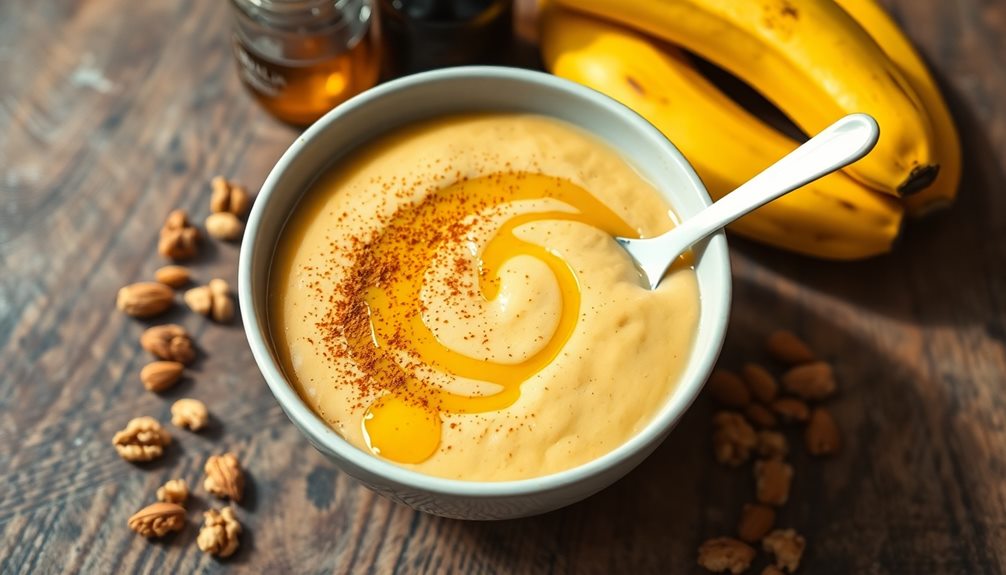Chutney, the vibrant condiment from India, has captured the world's tastebuds with its captivating blend of sweet, savory, and tangy flavors. Crafted from ripe fruits, aromatic spices, and fragrant herbs, these preserves offer a delightful culinary journey, elevating everything from meats and cheeses to desserts. The history of chutney spans centuries, with regional variations reflecting India's diverse culinary traditions. Making chutney at home is a rewarding experience, allowing you to experiment with ingredients and create unique blends. By balancing the flavors just right, you can craft irresistible chutneys that will have your friends and family asking for more. There's so much more to discover about the versatility of chutney. One popular variation is mango chutney, known for its sweet and tangy taste that pairs perfectly with grilled meats. Another unique option is a haysmoked tomato chutney, which adds a delicious smoky twist to the traditional recipe. Experimenting with these unique haysmoked flavors can add a whole new dimension to your culinary creations, making chutney an essential addition to any cook’s repertoire.
Key Takeaways
- Chutney has a rich history originating in the Indian subcontinent, with diverse regional variations reflecting local culinary traditions.
- The recipe for homemade chutney involves sautéing fruits, onions, garlic, and spices, then simmering the mixture to achieve the desired thickness and flavor.
- Chutney's flavor profile is a balance of sweetness, acidity, and spice, which can be customized to individual preferences.
- Chutney is a versatile condiment that can enhance a variety of dishes, from savory meals to sweet desserts.
- Homemade chutney makes a thoughtful and delicious gift, while the chutney-making process encourages culinary exploration and creativity.
History
Chutney, a savory condiment originating from the Indian subcontinent, has a rich and storied history spanning centuries. From the ancient spice markets of India to the modern kitchens of the world, this versatile preserve has captivated the palates of countless individuals.
Traditionally, chutneys were made by grinding together fresh herbs, spices, and fruits, creating a vibrant blend of flavors that complemented local cuisines. Over time, the recipes evolved, with each region developing its own unique variations, reflecting the diverse culinary traditions of the Indian people.
As trade and globalization spread, chutney's popularity soared, making its way into international cuisines and becoming a beloved accompaniment to a wide range of dishes.
Today, the art of chutney-making continues to thrive, with innovative chefs and home cooks alike experimenting with new ingredient combinations and flavor profiles, ensuring that the rich history of this remarkable condiment lives on.
Recipe
Chutney is a versatile condiment that can elevate a variety of dishes with its tangy, sweet, and spicy flavors. Whether you're looking to accompany a hearty curry or add a zesty touch to a sandwich, homemade chutney is the way to go. In this recipe, we'll walk you through the steps to create a delectable chutney that will become a staple in your kitchen.
Incorporating elements of choosing a healthy breakfast can also inspire your chutney pairings, making meals more nutritious and flavorful. Chutney-making is a delightful process that allows you to experiment with different flavor combinations. The following recipe can be tailored to your personal taste preferences, so feel free to adjust the spices and sweetness to your liking.
Ingredients:
- 2 pounds ripe mangoes, peeled and diced
- 1 onion, finely chopped
- 4 cloves garlic, minced
- 1-inch piece of ginger, grated
- 1 teaspoon cumin seeds
- 1 teaspoon mustard seeds
- 1 teaspoon coriander seeds
- 1 teaspoon chili powder
- 1 cup apple cider vinegar
- 1/2 cup brown sugar
- 1 teaspoon salt
Instructions:
In a large saucepan, combine the diced mangoes, onion, garlic, and ginger. Add the cumin seeds, mustard seeds, and coriander seeds, and sauté the mixture over medium heat until the onions are translucent.
Stir in the chili powder, apple cider vinegar, brown sugar, and salt. Bring the mixture to a boil, then reduce the heat and let it simmer for about 30 minutes, stirring occasionally, until the chutney thickens to your desired consistency.
When it comes to serving your homemade chutney, the possibilities are endless. It pairs beautifully with grilled meats, roasted vegetables, or even as a spread on crackers or bread.
For best results, allow the chutney to cool completely before storing it in an airtight container in the refrigerator for up to two weeks. Enjoy the vibrant flavors and the satisfaction of creating a condiment from scratch.
Cooking Steps
Chop the fruit into small, bite-sized pieces.
For added richness, consider incorporating a small amount of butter substitutes like coconut oil or nut butters to enhance the flavor of your chutney.
Add a pinch of sugar and your favorite spices to the mix.
Simmer the chutney at a low heat, stirring occasionally, until the flavors meld together perfectly.
Jar up your homemade preserves and pop them in the fridge.
Don't forget to give it a quick taste and adjust the seasonings as needed.
Step 1. Chop Fruit Into Small Pieces

After gathering your fresh produce, begin by chopping the fruit into small, uniform pieces. This step is crucial for ensuring even cooking and blending of the chutney. Use a sharp knife to dice the fruit into bite-sized chunks, aiming for pieces that are roughly the same size. This will help the ingredients cook evenly and create a smooth, consistent texture in the final product.
Take your time with this step, being careful to work safely and avoid any accidents. As you chop, pay attention to the fruit's natural shape and try to maintain a uniform size throughout. This won't only improve the appearance of your chutney, but it will also enhance the flavors as the pieces cook together.
Remember to discard any seeds, pits, or tough stems that you encounter. With the fruit now chopped, you're ready to move on to the next step in creating your delicious chutney.
Step 2. Add Sugar and Spices

Next, you'll want to add the sugar and spices to your chopped fruit. This is where the real magic happens!
Start by sprinkling in some white sugar. The amount will depend on how sweet your fruit is and your personal taste preferences. As a general guideline, aim for about 1/4 cup of sugar for every 2 cups of chopped fruit.
Now, it's time to add the spices. Cinnamon is a classic, but you can experiment with other warm spices like ginger, cloves, or allspice. Start with just a teaspoon of each and give it a taste. You can always add more if you want a stronger flavor.
Stir everything together until the sugar has dissolved and the spices are evenly distributed.
The sweet and fragrant aroma filling your kitchen is a sure sign that your chutney is coming together nicely. Get ready to let those flavors meld and transform your chopped fruit into a delectable preserve.
Step 3. Simmer Mixture at Low Heat
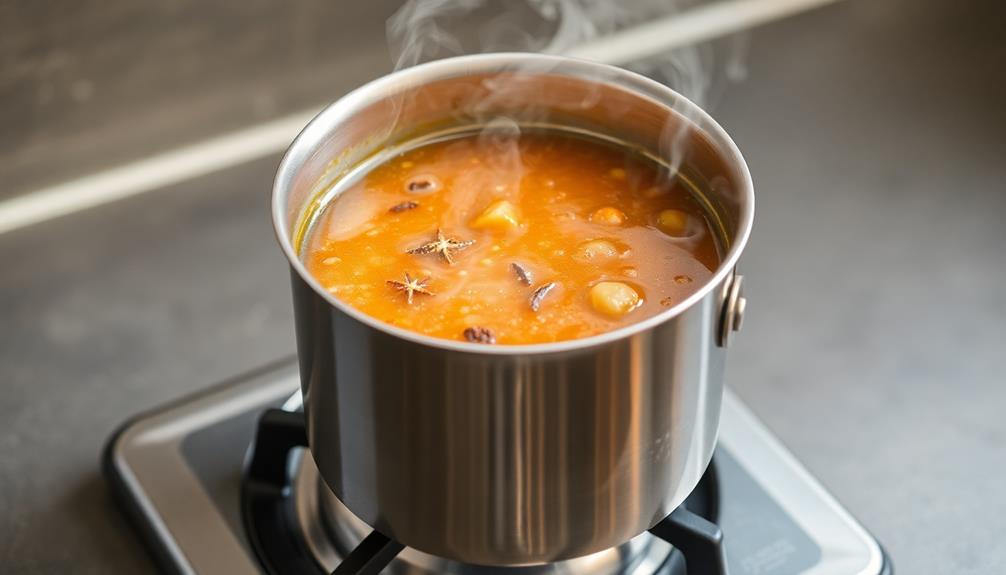
Once you've added the sugar and spices, it's time to start simmering the mixture. Grab your pot and turn the heat down to low. You want the chutney to gently bubble, not boil rapidly. This slow simmering process allows the flavors to meld together beautifully, much like how herbal teas can promote relaxation through their calming properties.
Stir the chutney occasionally, making sure nothing sticks to the bottom of the pot. Let it simmer for around 30-45 minutes, until the mixture has thickened and the fruit has softened. The longer you simmer, the richer and more concentrated the flavors will become.
Keep a close eye on the pot, adjusting the heat as needed to maintain a gentle simmer. You may need to tweak the temperature a bit to find the perfect sweet spot. Patience is key – resist the urge to crank up the heat, as that can lead to scorching.
Once the chutney has reached your desired consistency, it's time to move on to the next step. Get ready to ladle that delicious, fragrant mixture into jars!
Step 4. Jar Preserves and Refrigerate

Carefully ladle the simmered chutney into sterilized jars, leaving a bit of headspace at the top. This allows for expansion as the chutney cools.
Wipe the rims of the jars with a clean, damp cloth to ensure a proper seal. Grab the lids and screw them on tightly, creating an airtight environment. This process helps the chutney maintain its vibrant color and fresh flavor.
Once sealed, let the jars cool completely at room temperature. Then, place them in the refrigerator. The cool temperature will help the chutney keep for several weeks.
When you're ready to enjoy, simply remove a jar and spoon out the delicious preserve. Spread it on bread, crackers, or use it as a topping for meats and cheeses. The sweet and savory notes of the chutney will delight your taste buds.
Step 5. Taste and Adjust Seasonings as Needed
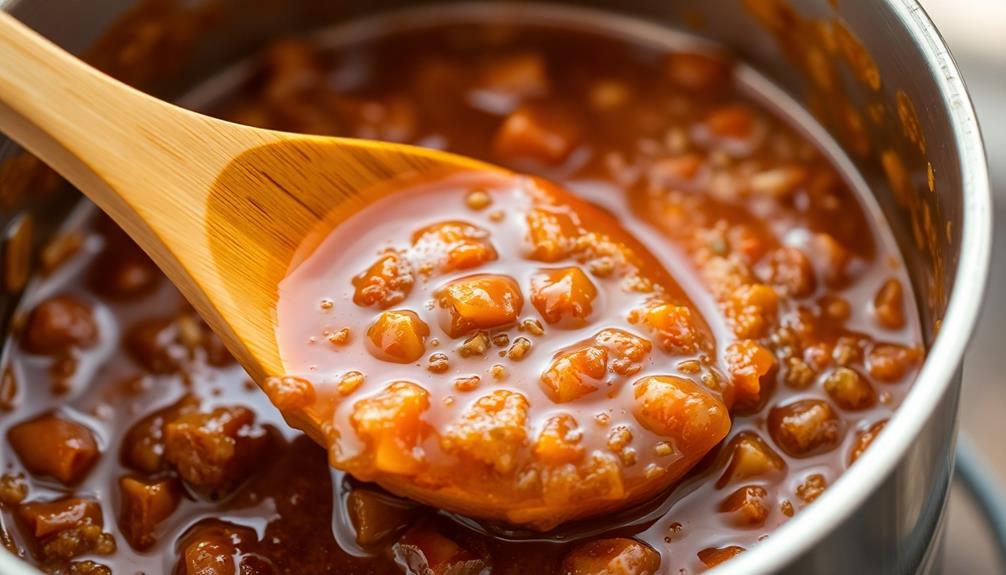
Taste the chutney and evaluate the balance of sweet, sour, and savory flavors. If the chutney needs more sweetness, add a bit of honey or brown sugar. For a tangier kick, stir in a splash of apple cider vinegar or lemon juice. Don't be afraid to experiment until you achieve the perfect flavor profile.
Once the sweetness and acidity are balanced, consider the spice level. If you'd like more heat, try adding a pinch of cayenne pepper or crushed red pepper flakes. Taste as you go, adjusting the seasonings gradually to avoid overpowering the other flavors.
Don't forget to season with salt and pepper. A small amount of sea salt or kosher salt can really make the other flavors pop. You can also try other spices like cumin, coriander, or mustard powder for extra depth.
Keep tasting and tweaking the seasonings until the chutney tastes bright, vibrant, and irresistible. Enjoy your custom-crafted creation!
Final Thoughts
As you bring your culinary exploration of chutney creations to a close, consider the versatility and potential this vibrant condiment holds.
Chutney can elevate a wide variety of dishes, from savory meals to sweet desserts. Its diverse flavors and textures make it a perfect accompaniment to meats, cheeses, breads, and more. Experiment with mixing different fruits, spices, and herbs to craft your own unique chutney blends. The possibilities are endless!
Beyond its culinary uses, chutney also makes a wonderful homemade gift. Jar up your favorite recipes and share them with family and friends. They'll appreciate the thoughtfulness and delicious flavors. Who knows, you might even inspire others to get creative in the kitchen and explore the world of chutneys.
As you've discovered, preparing chutney is a rewarding and versatile cooking experience. Embrace the freedom to play with ingredients and create something truly special.
Your taste buds and loved ones will thank you.
Frequently Asked Questions
How Long Do Chutney Preserves Typically Last?
Typically, chutney preserves can last up to a year when stored properly in the refrigerator. The exact shelf life depends on the ingredients and the acidity level, but you can generally enjoy them for several months after opening.
Can Chutney Be Used as a Marinade or Sauce?
Absolutely, you can use chutney as a marinade or sauce. Its blend of sweet, tangy, and savory flavors makes it a versatile ingredient that can enhance the taste of meats, vegetables, and even sandwiches.
What Are Some Unique Flavor Combinations for Chutneys?
You can explore unique chutney flavors by experimenting with unexpected pairings like pear and ginger, mango and curry, or fig and balsamic. The possibilities are endless, so get creative and discover your new favorite chutney combination.
How Do I Properly Store Opened Jars of Chutney?
To properly store opened jars of chutney, refrigerate them and use within 2-3 weeks. Ensure the lid is tightly sealed between uses to maintain freshness. Discard any chutney with visible signs of mold or an off smell.
Can Chutney Be Used as a Substitute for Jam or Jelly?
You can absolutely use chutney as a substitute for jam or jelly. Chutney's complex flavor profile can enhance various dishes, from sandwiches to cheese plates. Just keep in mind the specific taste of the chutney you're using.
